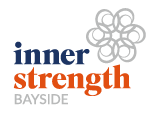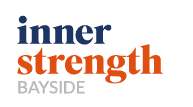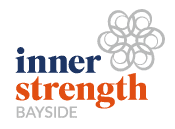Anterior (front of) Hip Pain by Luci Minogue
The hip is a ball and socket joint. The ball is the top of your thigh bone (femoral head) and the socket is your pelvis (aceltabulum). Pain at the front of the hip (anterior hip pain) can be caused by the ball not sitting in the socket properly. Often it translates forward, which leads to pain. There are several contributing factors to this, some causes may be:
- Ideally in standing there should be a straight line (plumb line) from shoulders through the outside of your knee, down to just in front of the bony bump on the outside of your ankle. Watch out for bad habits such as standing with your knees hyper-extended (think soft knees!) or with a sway back so that your shoulders are behind your hips (see photo).
- The top of your pelvis (bony bits felt on the sides below your stomach) should be of symmetrical height. Sometimes this can be twisted due prolonged and repetitive actions such as carrying kids.
Thoracic (mid back), Lumbar spine (lower back) or sacroiliac (pelvic) dysfunction:
- Are you able to rotate your upper back evenly to both sides? If you are stiff in one direction, you may overcompensate by then counter rotating your pelvis the other way.
- Often people with low back pain will have increased tension in their gluteal muscles which will cause the femoral head (ball) to glide forwards in the acetabulum (socket).
- There is a link between low back pain and reduced hip rotation range of movement.
Poor sitting posture:
- Ensure your feet are even, relaxed and symmetrical on the floor.

- Allow the buttocks to be wide and relaxed when you sit, allow your upper back (thorax) to fold forwards over the hips.
- Try not to slump i.e. imagine your pelvis is a bucket of water, make sure it is not tilted back (slumped) or forwards.
- This may initially require some concentration and effort to change poor postural habits however should eventually become effortless.
Stiff ankles:
- This is important to assess if you get your pain with standing, walking or running.
- Excessive rigidity in rear/mid/forefoot can contribute to an increased load on the front of the hip.
Treatment can involve:
- Massage or dry needling to release tight muscles around the hip.
- Postural Assessment.
- Bio-mechanical assessment of walking or running technique.
- Exercise prescription to strengthen your core and other muscles supporting your hip.
Please contact our physiotherapists at InnerStrength of Bayside on 8555 4099 if you have any hip concerns.



